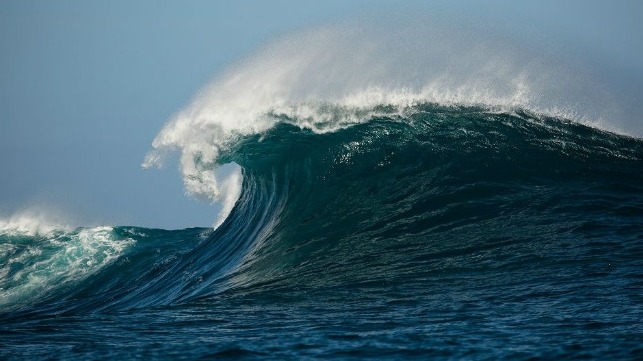Ocean Waves Trap More CO2 Than Previously Thought

A new study has found ocean waves play a greater role in this trapping carbon dioxide than previously thought.
The research shows that when waves break on the surface, such as in high winds, a substantial number of bubbles are injected to depths of at least a meter. These bubbles tend to partially dissolve, releasing carbon dioxide into the water.
The discovery means an increase in the current global estimates of the oceanic sink of carbon dioxide and rates of ocean acidification. Additionally, the amount of CO2 that dissolves into stormy seas through bubbles will increase as the proportion of CO2 in the atmosphere increases.
Professor Tim Leighton, Principal Investigator for the study from the University of Southampton, said: “If the amount of carbon dioxide dissolving into the seas from the atmosphere exactly balanced the amount leaving the seas and entering the atmosphere, we would have a steady state situation.
“However, our data suggests that in stormy seas the bubble-induced asymmetry in atmospheric carbon dioxide dissolving into the oceans, as compared to previously dissolved carbon dioxide being released back into the atmosphere, is many times greater than scientists currently estimate.”
Led by the University of Southampton, the study was published in collaboration with U.K.-based scientists including Dr. David Woolf of Heriot-Watt University.
